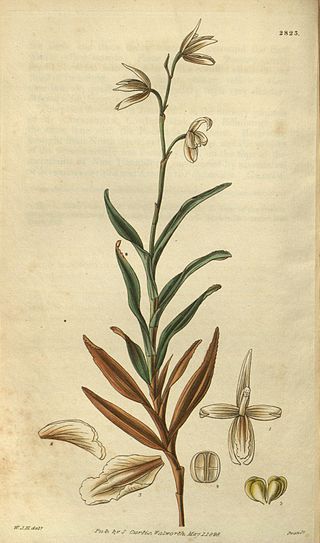
The International Union for Conservation of Nature (IUCN) Red List of Threatened Species, also known as the IUCN Red List or Red Data Book, founded in 1964, is an inventory of the global conservation status and extinction risk of biological species. A series of Regional Red Lists, which assess the risk of extinction to species within a political management unit, are also produced by countries and organizations.

The conservation status of a group of organisms indicates whether the group still exists and how likely the group is to become extinct in the near future. Many factors are taken into account when assessing conservation status: not simply the number of individuals remaining, but the overall increase or decrease in the population over time, breeding success rates, and known threats. Various systems of conservation status are in use at international, multi-country, national and local levels, as well as for consumer use such as sustainable seafood advisory lists and certification. The two international systems are by the International Union for Conservation of Nature (IUCN) and The Convention on International Trade in Endangered Species of Wild Fauna and Flora (CITES).

Junín National Reserve is a protected area located in the region of Junín, Peru. One of its main purposes is to protect the ecosystem and biodiversity of Lake Junín and the surrounding Central Andean wet puna.

A least-concern species is a species that has been categorized by the International Union for Conservation of Nature (IUCN) as evaluated as not being a focus of species conservation because the specific species is still plentiful in the wild. They do not qualify as threatened, near threatened, or conservation dependent.

An IUCN Red List Critically Endangered species is one that has been categorized by the International Union for Conservation of Nature as facing an extremely high risk of extinction in the wild. As of December 2023, of the 157,190 species currently on the IUCN Red List, 9,760 of those are listed as Critically Endangered, with 1,302 being possibly extinct and 67 possibly extinct in the wild.
Lobelia oligophylla is an ornamental plant in the Campanulaceae family. It can be found from Ecuadorean Andes to Tierra del Fuego, in moist, usually open places. It was one of the species recorded and collected on Charles Darwin's The Voyage of the Beagle in the 1830s. It was previously known as Hypsela reniformis, but because the genus Hypsela is part of the enlarged genus Lobelia it had to be transferred. Its epithet changed because the name Lobelia reniformis was not available for it, as it was already in use for another species. The name Lobelia oligophylla was therefore reinstated.

Senna artemisioides, commonly known as silver cassia, is a species of flowering plant in the family Fabaceae and is endemic to Australia, where it is found in all mainland states and territories. It is a small, woody shrub with silver-green leaves and yellow flowers.

Dalbergia oligophylla is a species of legume in the family Fabaceae. It is native to Cameroon, and naturalized in certain parts of the Caroline Islands. Its natural habitat is subtropical or tropical moist montane forests. It is threatened by habitat loss.
Hypericum acostanum is a species of flowering plant in the family Hypericaceae. It is endemic to Ecuador, where it is known only from Loja.
Hypericum asplundii is a species of flowering plant in the family Hypericaceae. It is endemic to Ecuador, where it is known from a single collection made outside of Machachi.
Hypericum quitense is a species of flowering plant in the family Hypericaceae. It is endemic to Ecuador. Its occurs in several types of habitats at elevations between 2,000 and 4,050 meters in the Andes.

Hypericum scopulorum is a species of flowering plant in the family Hypericaceae. It is endemic to Socotra, an island archipelago that is part of Yemen. It is a common plant in shrubland habitat, and it is a dominant species in some areas along with Cephalocroton and another local endemic, Libinhania rosulata.
Aglaia oligophylla is a species of plant in the family Meliaceae. It is found in Brunei, India, Indonesia, Malaysia, the Philippines, Singapore, and Thailand.

Helicia is a genus of 110 species of trees and shrubs, constituting part of the plant family Proteaceae. They grow naturally in rainforests throughout tropical South and Southeast Asia, including India, Sri Lanka, Indochina, Peninsular Malaysia to New Guinea and as far south as New South Wales.

Dilomilis is a genus of orchids,, consisting of five species in the Greater Antilles.

Lepisanthes is a genus of 24 or 25 species of trees or shrubs native to tropical Africa, south and southeast Asia, Australia, and Madagascar.

Tabernaemontana pandacaqui, known as windmill bush and banana bush, is a species of plant in the dogbane family Apocynaceae.
Elliot Price Conservation Park, formerly the Elliot Price Wilderness National Park, is a protected area in the Australian state of South Australia located in the gazetted locality of Lake Eyre with its southern boundary being located about 90 kilometres north west of Marree.
Ononis oligophylla is a species of plants in the family Fabaceae.
Senna sericea is a species of flowering plant in the family Fabaceae and is endemic to inland north-western Australia. It is an erect shrub with pinnate leaves, with one or two pairs of egg-shaped leaflets, and yellow flowers arranged in groups of four to twelve, with ten fertile stamens in each flower.











